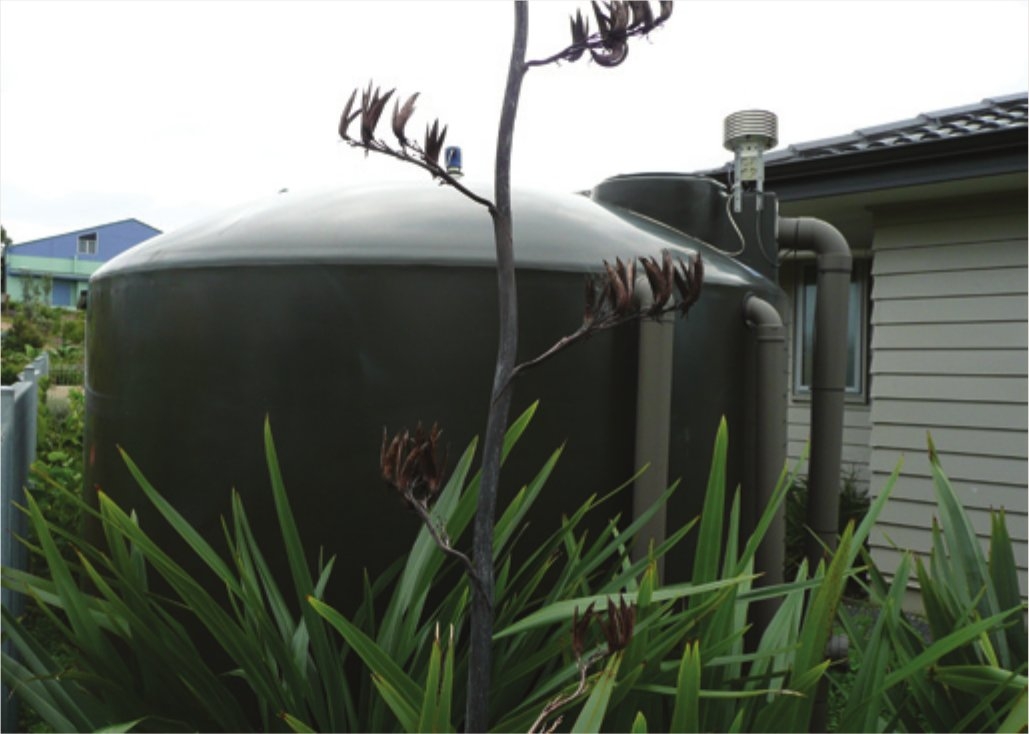Rainwater Filtration
Rainwater can be quite clean, but will often contain dirt, sediment and mould from material washed in from the roof and gutters. When water is stored in a tank Bacteria mixes with organic material from leaves creating the added problem of both general and faecal bacterial growth inside the tank.
Maintain your catchment areas so water entering the tank is as clean as possible. This can be done by keeping trees clear of your roof, removing leaves from gutters, and have your tank cleaned regularly.
Our rainwater treatment systems are usually placed after the pump providing clean water to the whole house. Organic Material & Sediment can be filtered out using one or more filter stages to remove the solid material. Colour, odour, chemicals and chlorine are reduced by using Activated Carbon. Giardia & Cryptosporidium are best filtered using a one micron filter followed by a UV system.

This section includes maintenance of intakes, roof painting and maintenance & cleaning out of storage tanks.
Intake Maintenance
A correctly designed intake will remove a lot of the large particulate material, but this material often clogs the intake so that you will need to clean it periodically. You can clean manually by removal, cleaning and replacement, cleaning in situ, and in some cases back- flushing. Where a bore has a screen, the screen can become fouled with bacterial encrustations. This build-up may not be harmful in terms of causing a disease, but it reduces the size of the well-screen until sufficient water cannot be drawn through the bore. You can use chlorine down the bore to reduce this problem, but you should seek specialist advice first. Bores clog over a period of time, depending on how well the bore was "developed" when it was drilled. You will need a specialist well-drilling firm to deal with this problem.
Roof Painting and Maintenance
If you use a roof catchment for your water supplies, there are certain practices to avoid. For instance, the metals, lead, chromium and cadmium are toxic and a roof painted with paint containing these metals should not be used as a source of drinking water. While modern roof paints are generally labelled as to their suitability for drawing off a water supply, a technical representative from a paint manufacturer should be able to give you advice. A roof used for your water supply requires regular cleaning, with the water flushed to waste. Water should be set aside for cleaning and the line feeding the water storage tank should be disconnected. You can use a scrubbing brush, broom and clean water to scrub down the roof and clean out and flush through the spouting. This clears the roof of dirt, mould, animal droppings and paint breakdown products.
Cleaning Out Storage Tanks
Your tank should be large enough to allow any material the opportunity to settle out with its outlet set a little above the base and a scouring valve located at the bottom. Your tank can be cleaned by removing all the water and then using clean water to sluice it and scrub it out. The sediment should be removed, and the tank cleaned, regularly. Refill your tank with disinfected water. (This, however, is not always practical for roof supplies). A long-handled clean broom can be used to push all the sludge on the bottom of your tank out through the scour valve.
We are happy to discuss and provide solutions to your water quality concerns. Feel free to complete our no obligation request form so we can come back to you.



